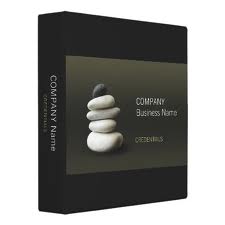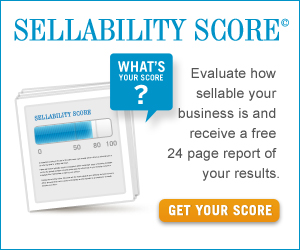 Does Your Business Have Curb Appeal?
Does Your Business Have Curb Appeal?
Let’s say you’re in the market for buying a house and you go to view one that looks appealing in the ad. How does it look on the inside? The outside? What about the location? What is your general impression?
Like your house, your business projects an image to potential buyers. When they come to see your business for the first time, your “curb appeal” can attract a buyer to your business—or cause them to walk away from it.
Do you need to improve your curb appeal?
Here’s a three-step plan:
1. Fix Your Leaky Faucets
 Perhaps, like many other business owners, you started your business from scratch with one or two employees and now you have 20 people working for you. But do you have the appropriate HR infrastructure in place for that size of a company? Perhaps you even take pride in your informal management style, but it can prove to be a liability when it comes time to sell.
Perhaps, like many other business owners, you started your business from scratch with one or two employees and now you have 20 people working for you. But do you have the appropriate HR infrastructure in place for that size of a company? Perhaps you even take pride in your informal management style, but it can prove to be a liability when it comes time to sell.
Make sure your human resources policies are at least as stringent as those of the company you hope will buy your business. Some basics to have in place:
- A written policy making it clear you forbid any form of harassment or discrimination;
- A written letter of employment for each staff member;
- A written description of your bonus system;
- Written policies for employee expenses, travel and benefits.
2. Assemble Your Binder
 When you go to buy a house, it will give you confidence if the owner has the instruction manuals for the appliances, information on where they were purchased, and who to call if one of them breaks down.
When you go to buy a house, it will give you confidence if the owner has the instruction manuals for the appliances, information on where they were purchased, and who to call if one of them breaks down.
Similarly, when a potential buyer looks at your company, he wants to see that you have your business information in order. Documenting your office procedures, core processes, and other intellectual capital can help you attract more bidders and a higher price for your company, while also lowering the chance of the deal falling apart during diligence.
If you want to attract a buyer one day, your business needs a binder with instructions for basic functions, such as:
- Opening up in the morning and closing down at night;
- Forms and step-by-step instructions for routine tasks;
- Templates for key documents;
- Emergency numbers for service providers;
- Billing procedures for customers.
- How your company is positioned in the market and your marketing tools.
3. Document Your Intangibles
 Intangibles for house buying might include:
Intangibles for house buying might include:
- Is the house near a good school or daycare?
- What kind of neighbourhood is it?
- What kind of commute are you looking at to get to work?
Your business also has intangible, often intellectual, assets that a potential buyer needs to be made aware of, such as:
- Proprietary research you’ve conducted;
- A formula for acquiring new customers;
- Criteria you use to evaluate a potential new location;
- Your unique approach to satisfying a customer.
As with selling a house, your company’s curb appeal can go a long way toward closing a deal.



 Is Now the Time To Sell Your Business?
Is Now the Time To Sell Your Business?

 The majority of businesses in Canada today started out as service companies. If you want to own a web design firm, you didn’t need a lot of money, just a technical knack. Enterprising professionals who know how to get the media’s attention can start their own pubic relations firms without much more than a mobile phone. No capital required.
The majority of businesses in Canada today started out as service companies. If you want to own a web design firm, you didn’t need a lot of money, just a technical knack. Enterprising professionals who know how to get the media’s attention can start their own pubic relations firms without much more than a mobile phone. No capital required.


 Prevention is better than cure
Prevention is better than cure Warren Buffett famously invests in businesses that have what he calls a protective “moat” around them – one that inoculates them from competition and allows them to control their pricing.
Warren Buffett famously invests in businesses that have what he calls a protective “moat” around them – one that inoculates them from competition and allows them to control their pricing.



